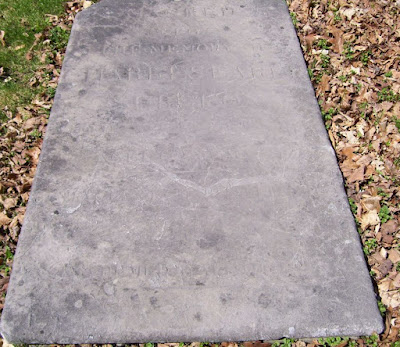 |
Born in Irvine, North Ayrshire, Scotland in 1751, Charles John Earle was a Loyalist who first settled in Princess Ann County, Virginia. There, prior to the American Revolution, he enjoyed a growing medical practise, but because he refused to take the Patriots' Oath was made prisoner at Kemps Landing and later released on the condition that he leave Virginia. He eventually joined the 2nd New Jersey Battalion of Skinner's Brigade as its surgeon in 1778, when he was 26 years old.
Skinner's Brigade fought at the Battle of Cowpens (January 1781), the Battle of Guilford (March 1781), the siege of Charleston (May 1780), and at the Battle of Eutaw Springs (September 1781). Dr. Earle's interventions would have made the difference between life and death for many of the Loyalist soldiers wounded in such bloody encounters.
Arriving at Pointe Sainte-Anne in the fall of 1783, Dr Earle is credited with saving the lives of many of the Loyalist settlers that first winter. As Hannah Ingraham later recalled:
All of the Loyalists [that first winter] were reduced to great straits... The men caught fish and hunted moose when they could. In the spring we made maple sugar. We ate fiddle heads, grapes, and even leaves of trees to allay the pangs of hunger. On one occasion some poisonous weeds were eaten along with the fiddle heads; one or two died, and Dr Earle had all he could do to save my life.
Another winter not long after, he was part of a group of men who travelled upriver by snowshoe to Canada, obtaining vital provisions of flour and biscuits: "It was a hard and dangerous journey and they were gone a long time."
The Earle house was the first finished home to be built by the Loyalists at Pointe Sainte-Anne. It was located off present-day Waterloo Row at 12 Acacia Court. This property was later owned (and greatly improved) by John Gregory, one of the founding members of the Fredericton Society of Saint Andrew.
In Fredericton Dr Earle maintained his contacts with the military, becoming the surgeon for the King's New Brunswick Regiment in 1793. He and his wife Elizabeth are reported to have had 15 children: seven sons and eight daughters. The family burial plot can be found in section 2 of the Old Burial Ground and Dr Earles’ stone reads:
Sacred
to
the memory of
Charles Earle
Surgeon
Who died on the 23rd January
1814
aged 62 years.
Benevolent, Charitable & Mild.
He
was esteemed by all who knew him.